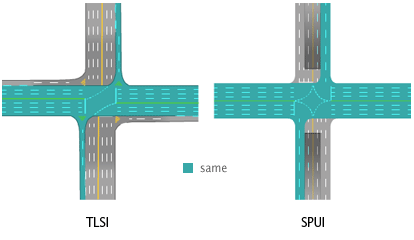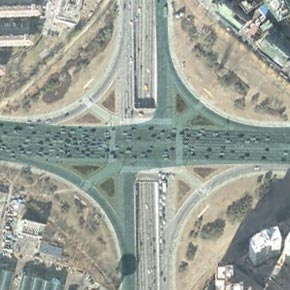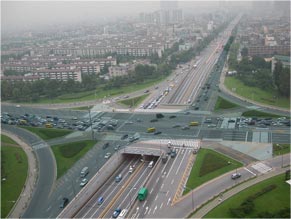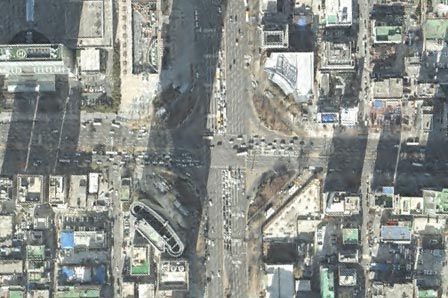 |
|
| |
|
- The top and bottom parts of the TLSI have the same operating mechanism as that of SPUI type roads.
- In other words, the TLSI by Roadnext is innovative, but drivers would feel the traffic signal system
same as that of the conventional intersection.
|
|
| |
|
 |
|
| |
|
- The diagrams above are schematic drawings of actual SPUI
(Single-Point Urban Interchange) intersections in Seoul (Yangjae
intersection, Karak Market intersection and so forth).
|
|
| |
|
| - The green highlighted portions of the two types of intersections
are identical. The photograph below shows 2-Level Signalized Intersection
currently in use. |
|
| |
|
|
|
| |
|
 |
|
| |
|
| |
|
 -
This is an aerial photograph of Karak Market intersection in Seoul. -
This is an aerial photograph of Karak Market intersection in Seoul.
- The colored portion of the intersection is identical to the top
or bottom of the TLSI invented by Roadnext.
- The TLSI by Roadnext has two of the colored portion of the SPUI-type intersections each on the top and the bottom of the intersection. |
|
| |
|
 - This is the same intersection, and the highlighted portion on the left is the same. - This is the same intersection, and the highlighted portion on the left is the same.
|
|
| |
|
|
|
| |
|
|
|
| - Hightlighted portions of Gaepo intersection in Seoul and Yumgok
intersection in Seoul are equivalent to the parts of the TLSI. |
|
| |
|
| - This is the same SPUI-type intersection as Garak Market intersection,
but the traffic island and radius of the loops are smaller than those
in Garak Market intersection |
|
| |
|
| - The following intersection is an example of a conventional intersection
with a similar area as the SPUI-type intersection. |
|
| |
|
|
|
| |
|
 |
|
 |
|
| - The area required for TLSI is
similar to the area of the SPUI-type intersection. |
|
| |
|
| - It is clear that the TLSI is a new type
of intersection in terms of signal operation, but it is essentially similar to
a conventional intersection in terms of its size and shape. |
|
 |
|

